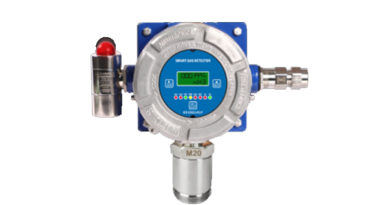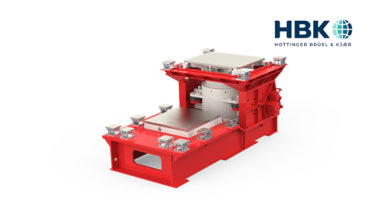How do strain-gauge based force transducers benefit from integrated signal-processing capabilities and an IO-Link interface?
August 08, 2024 IO-LINK
HBK´s new, integrated IO-Link amplifier module offers a range of exciting features that will provide your force measurement processes and applications with a wide array of benefits.
This includes linearisation functions, two limit value switches, low-pass filters that are freely adjustable, a single fixed digital output (DO) with an optional, additional digital output in standard input/output (SIO) mode, sensor IO-Link health monitoring to warn you if anything tips into a critical operating state, and a range of statistical functions.
Let’s take a look at each of these in turn.
Linearisation functions
This feature allows you to calibrate your sensor using either cubic linearisation functions or tabular interpolation points, and is set up to make it easy to enter results from standardised calibration certificates (ISO 376 DKDR3-3).
However, if you want to work with reference points to do the linearisation with your own reference measurements, no problem. The amplifier module accommodates that too.
Low-pass filters that are freely adjustable (Bessel and Butterworth)
HBK´s smart force transducers use sixth-order digital filters. The cut-off frequencies can be easily configured and stored in the sensor’s parameter storage.
Two limit value switches
These limit value switches will be programmed to reflect the IO-Link Smart Sensor Profile specifications. If your process demands it, you can define a hysteresis as well as the threshold value. You also have the option to use “window mode”, so that when the measured value falls between the range you set (e.g., 1kN-1.8kN), it activates the limit value switch. You can also negate both switches.
Statistical functions
All statistical functions are calculated on the basis of a 40kS/s measuring rate. This includes minimum and maximum values, average values, and the frequency of measuring points.
Two switching outputs: one fixed, one switchable
IO-Link offers an always-available single digital output (DO), which means you can obtain results from the digital switching output fast whenever you need them. Once you exceed or dip below the threshold value, the output switches at a maximum of 0.35ms above/below the threshold. It’s also possible to turn your force transducer into a force switch with two switching points by deactivating the IO-Link communication transmission, then utilising this line as a second digital output in standard input/output (SIO) mode when it becomes available.
Critical operating states trigger a sensor health warning
A major benefit of the IO-Link technology is that it gives you an early warning if your system moves out of safe operating parameters, before there’s risk of any damage. This might apply, for example, if you encounter static and dynamic overloads or temperatures falling outside the specification.
The amplifier stores all essential sensor properties during production, including highest and lowest operating temperatures, limit temperature electronics, processor limit temperature, highest/lowest nominal force, highest/lowest nominal temperature, and maximum peak–to-peak value (amplitude). The force and temperature values are constantly being compared with these limits by the electronics. If the values tip into the danger zone, an event is triggered which allows for preemptive intervention.



